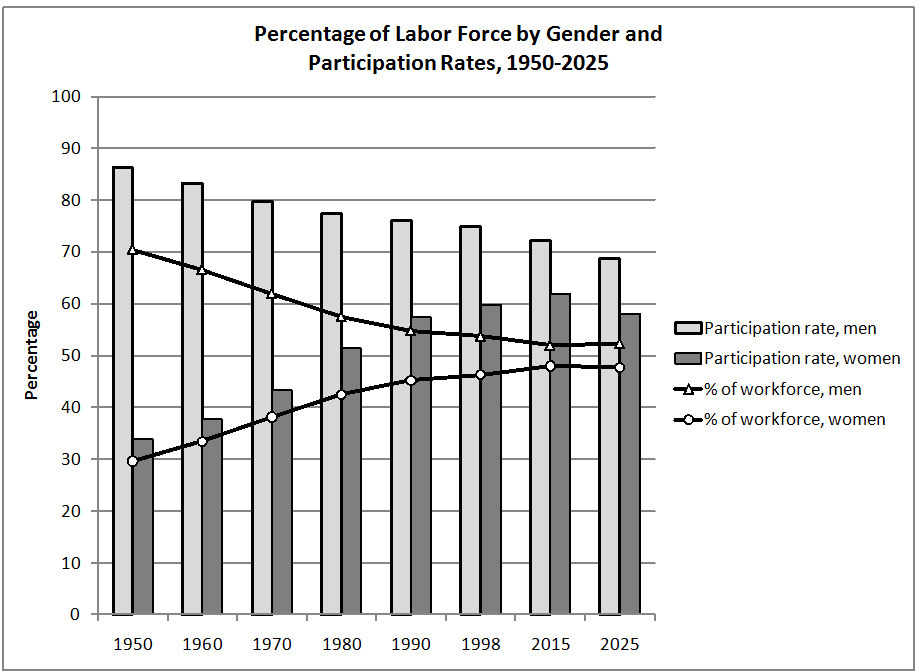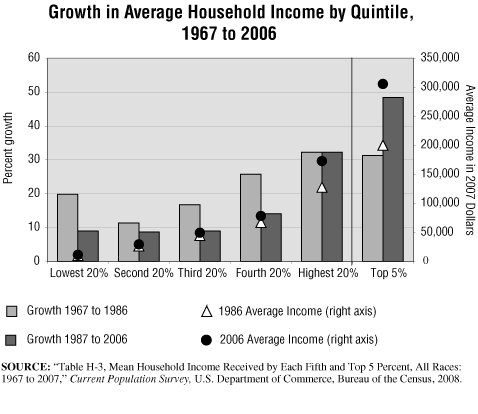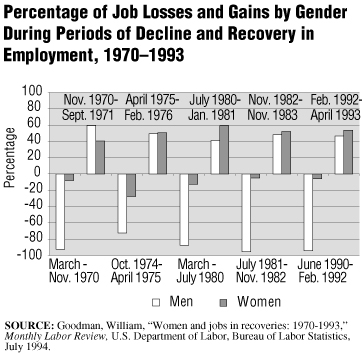
The chart above shows the percent distribution of the workforce by gender. Also shown is the labor force participation rates by gender for 1950 to 2025. Until 2015, the participation rates and, consequently, the share of the workforce has increased for women. In the same time period, the participation rates and share of the workforce for men have dipped. After 2015, the men’s participation rate is expected to continue to decrease. The women’s participation rate is also expected to decrease, but at a slightly faster rate than the men’s. As a result, the men’s share of the workforce is projected to increase and the women’s share is projected to decrease, thereby reversing the trend of the past 65 years.
The decrease in men’s participation rates can be partially attributed to the aging of the population. The availability of Social Security benefits made it possible for more men to retire after age 65. During the 1970s, Social Security payments were relatively high due to over-adjusting for inflation. As a result, even more men over age 65 retired during this period than in the 1960s. When those aged 62 and older became eligible for Social Security, more men retired from the workforce. By 1994, only half the men 62 years and older were in the workforce; in 1970 the ratio was 75 percent.
The change in the Social Security Act of 1960 made those under age 50 eligible for disability payments. This has been attributed to the decrease by 4.3% in the labor force participation rate of men aged 25 to 34 during the years 1960 to 1998. A greater availability of pensions also contributed to the reduction of men’s participation in the workforce.
The increase in women’s participation rates coincided with the modern Women’s Rights Movement. More women entered the workforce at younger ages and stayed in the workforce after their children were born. From 1980 to 2000, the participation rate for those women with children under 18 increased by 16.3%. Those with children under age 6 increased their participation rate by 18.5%.
More women are now heads of household and sole support of their families. In 1995, nearly 28% of all households were headed by women, 16.3% of which were headed by single women — a striking difference from 1950. In that year, the total percentage of households headed by singles was 9.3%, with only a fraction of that headed by women.
After 2015, the participation rate for women is expected to decline. This has to do with the increasing diversity of the workforce and the different participation rates of each race and ethnic group. Hispanics are expected to have the highest growth rate in the working-age population, but the participation rates for Hispanic women are the lowest among the top ethnic groups. Meanwhile, the white, non-Hispanic working-age population is expected to have the biggest decrease, but this group has the highest female participation rate. Therefore, the aggregate labor force participation rate for women is projected to decrease.
During this time period, the men’s aggregate participation rate is also expected to decrease, but at a slower rate than the women’s: Hispanic men have a high rate. This helps to offset the decrease in the participation rates of white, non-Hispanic men. As a result, the men’s share of the workforce starts trending upward, while the women’s share starts trending downward.
The next panel discusses gender differences in employment during the past 25 years.
Sources: Fullerton, Jr., Howard N., “Labor force participation: 75 years of change, 1950-98 and 1998-2025”, Monthly Labor Review, December 1999. Bureau of Labor Statistics. U.S. Department of Labor. “Table 6. Labor force participation rates of women by presence and age of children, March 1980-2000”, Report on the American Workforce 2001. Washington D.C.: U.S. Government Printing Office, 2001. U.S. Census Bureau. “Table 1. Projections of Households by Type: 1995 to 2010, Series 1, 2, and 3” Retrieved December 5, 2001 from http://www.census.gov/population/projections/nation/hh-fam/table1n.txt. U.S. Census Bureau. “Historical Census of Housing Tables – Living Alone.” Retrieved December 5, 2001 from: http://www.census.gov/hhes/www/housing/census/historic/liv-alone.html.



